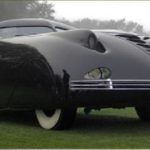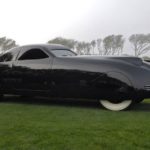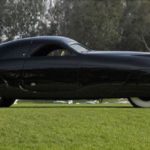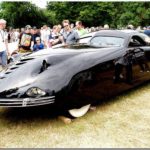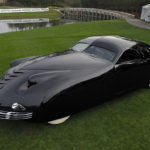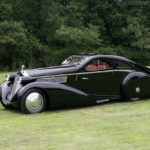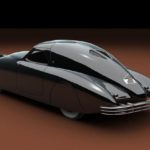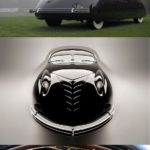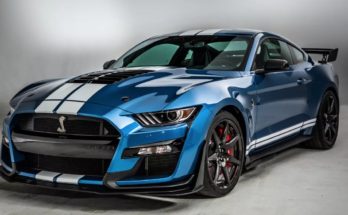The 1938 prototype Phantom Corsair is the only one of its kind. Though some may dismiss it as a failure (production was never begun due to its benefactor’s death in a car accident a year after the prototype was made), it is also regarded as a vehicle ahead of its time, due to its design and styling.
Rust Heinz and Maurice Schwartz were the two people responsible for bringing this beauty to life, adding futuristic details such as push-buttons instead of door handles, beverage cabinets, and a low body.
The Phantom Corsair weighs in at 4,600 lbs, but because of its low, aerodynamic build and a modified engine (from Lycoming), it could still reach speeds of up to 115mph. Another modification made was a conversion of the Cord 810 chassis to support a longer steel and aluminum body, which measures 237 inches long and almost 77 inches wide.
The result is a wide, long, low, powerful car able to seat six people (four in the front and two in the back with the beverage cabinets) comfortably in a vehicle that was sure to turn heads. Though the original prototype cost around $24,000 to make, it would have gone into limited production with a price tag of $12,500 per vehicle.
Sadly, we may never see another like the Phantom Corsair except in media, like the video games L.A. Noire and Mafia: The City of Lost Heaven (it’s a rare vehicle that you can unlock and drive in both games), the film series Popular Science, and the movie “The Young in Heart” (featured as the “Flying Wombat”).
If you ever find yourself near Reno, Nevada, however, you might get the chance to take a peek at the Phantom at the National Automobile Museum, also known as the Harrah Collection. It’s well worth the trip to see this tantalizing taste of the past’s perception of our future.
 " >
" >

